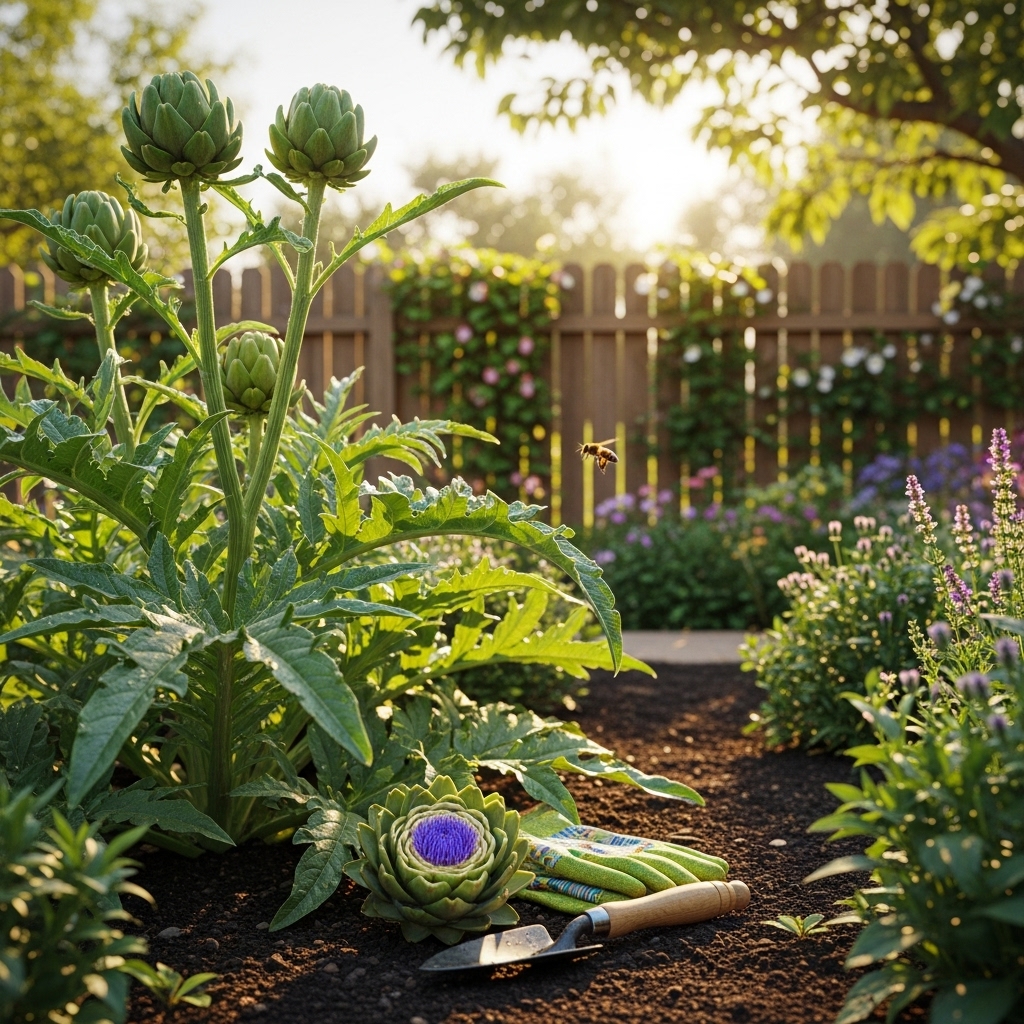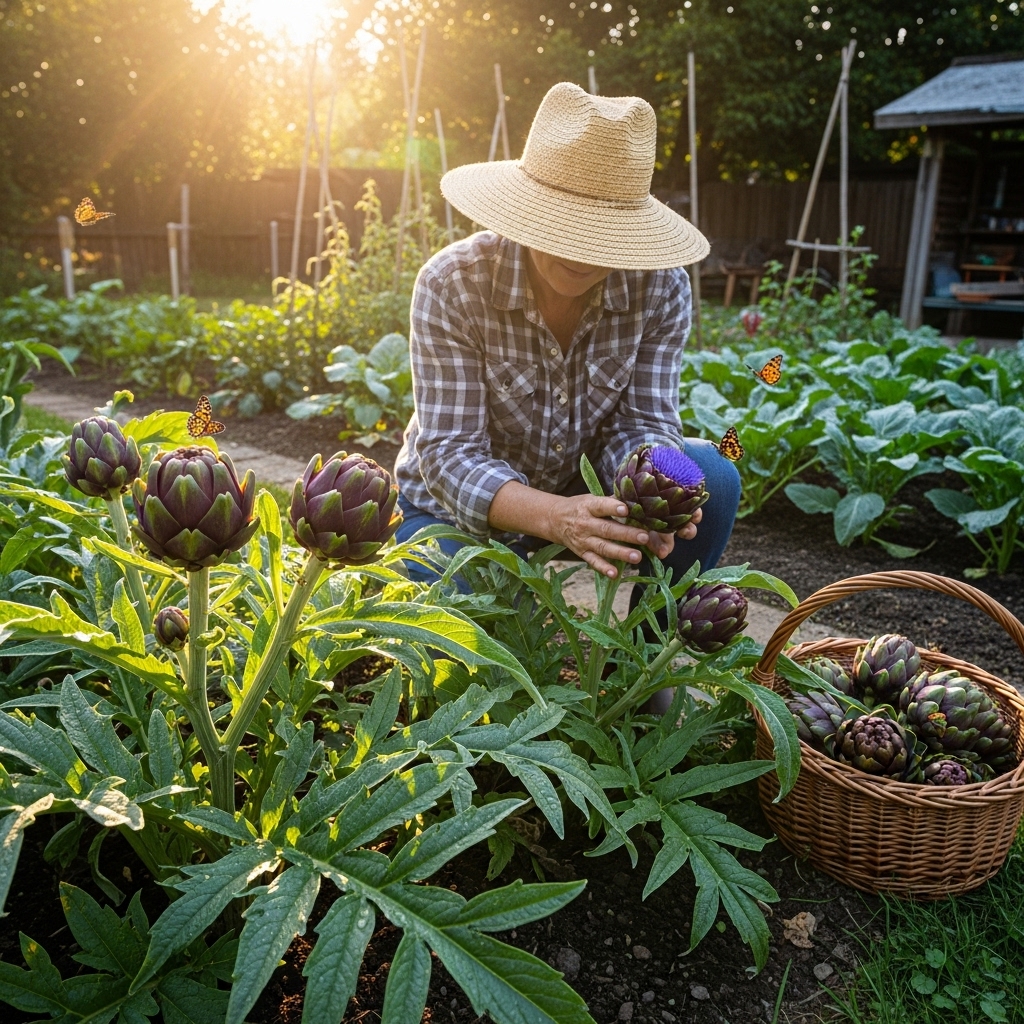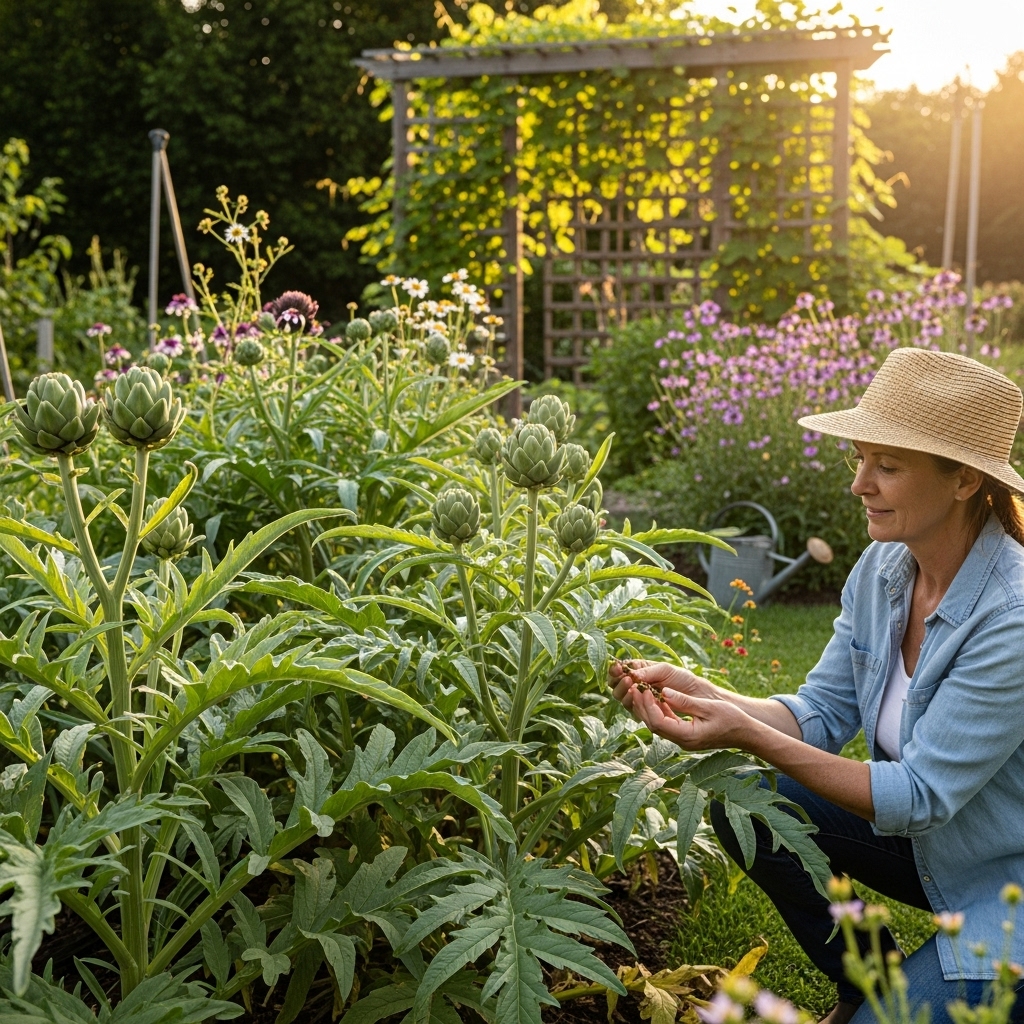Growing artichokes in my backyard has been an incredibly rewarding experience. With their unique flavor and striking appearance, these delicious vegetables can transform any garden into a vibrant edible landscape.
Understanding Artichokes: A Brief Overview

When I first decided to grow artichokes, I was captivated by their unique structure and culinary potential. Artichokes, known scientifically as Cynara scolymus, are perennial thistles that produce edible buds. These buds are harvested before they bloom, providing a tender and flavorful addition to a variety of dishes. I quickly learned that growing artichokes requires some specific conditions and care, but the reward is certainly worth the effort.
Choosing the Right Variety
As I began my journey, I discovered that there are several varieties of artichokes, each with its distinct characteristics. The most common types are Green Globe, Imperial Star, and Violetto. Green Globe is the most widely grown in the U.S., known for its large, globular buds and excellent flavor. Imperial Star is a hybrid variety that matures earlier, making it a great choice for gardeners with shorter growing seasons. On the other hand, Violetto is an Italian variety with a unique purple hue and a slightly more delicate flavor.
When selecting a variety, I considered my local climate, growing season, and personal taste preferences. I ended up choosing the Green Globe for its reliable yield and robust flavor, but I recommend researching the varieties to find the one that best suits your gardening conditions.
Site Selection and Preparation
The next step in my artichoke-growing adventure involved finding the perfect spot in my backyard. Artichokes thrive in full sun, so I scouted areas that receive at least six to eight hours of direct sunlight daily. Additionally, I needed well-draining soil rich in organic matter. After testing my soil’s pH, I found it to be slightly acidic, which is ideal for artichokes.
Before planting, I prepared the garden bed by removing any weeds and debris. I then amended the soil with compost and well-rotted manure to enhance fertility. This process not only improved the soil structure but also ensured that my artichokes would have the nutrients they needed to grow strong and healthy.
Starting from Seeds or Transplants
I had the option to grow artichokes from seeds or transplants. After considering the advantages of both methods, I ultimately decided to go with transplants for a head start. Growing from seeds requires a longer growing season and often leads to a later harvest, which wasn’t ideal for my climate.
If you choose to start from seeds, it’s essential to begin them indoors about 8-10 weeks before the last frost. I learned to use seedling trays filled with a seed-starting mix, keeping them warm and moist until germination. Once the seedlings developed a few sets of true leaves, I carefully transplanted them into larger pots to give them room to grow before moving them outdoors.
For those using transplants, I found that purchasing young artichoke plants from a reputable nursery can save time and provide a more reliable yield. When I brought my transplants home, I ensured they were healthy and free from pests before planting them in my prepared garden bed.
Planting and Spacing
When it came time to plant my artichokes, I followed specific spacing guidelines to ensure they had enough room to grow. Each plant needed at least three feet of space, as they can spread out quite a bit. I dug holes that were slightly larger than the root ball of each transplant, gently placing them in the ground and covering the roots with soil.
After planting, I gave each artichoke a good soak to help settle the soil around the roots. I also mulched the area with organic material to retain moisture and suppress weeds. I learned that keeping the soil consistently moist—without becoming overly soggy—is crucial for artichoke growth.
Watering and Fertilization
Watering became a vital part of my artichoke care routine. I found that artichokes prefer consistent moisture, especially during the growing season. I aimed to provide at least an inch of water per week, which I supplemented with a drip irrigation system to ensure even watering without wetting the foliage too much.
In terms of fertilization, I started with a balanced fertilizer during the initial growth phase. After the plants established themselves, I switched to a phosphorus-rich fertilizer to promote bud development. I also made sure to monitor the plants for any nutrient deficiencies, adjusting my fertilization routine as necessary to keep them healthy.
Pest and Disease Management
As with any gardening endeavor, I encountered a few challenges, particularly with pests and diseases. Artichokes can attract aphids, slugs, and spider mites, so I remained vigilant and used organic pest control methods whenever necessary. I often found that introducing beneficial insects, such as ladybugs, helped keep pests in check without harming my plants.
In terms of diseases, artichokes can be susceptible to fungal issues like powdery mildew. To combat this, I ensured proper air circulation by spacing the plants adequately and avoiding overhead watering. Keeping the garden clean and free of debris also played a significant role in preventing disease spread.
As I continued my journey of growing artichokes, I became more attuned to their needs and quirks. The experience has not only enhanced my gardening skills but has also filled my kitchen with delicious, homegrown artichokes that I proudly share with family and friends.
Harvesting Your Artichokes

One of the most exciting parts of growing artichokes is the moment when I got to harvest them. I learned that the timing of the harvest is crucial for achieving the best flavor and texture. Artichokes are typically ready to harvest when the buds are still tightly closed and have reached a size of about 3 to 5 inches in diameter. Waiting too long can lead to open flowers, which not only makes the buds tough but also diminishes their flavor.
To harvest, I used a sharp knife and carefully cut the buds from the plant, leaving a few inches of stem attached. I made sure to check the plants regularly because the harvest window can be surprisingly short. I discovered that picking the buds in the morning, when they are most hydrated, not only helps preserve their freshness but also enhances their flavor. Each harvest was a small celebration, and I felt such a sense of accomplishment every time I filled my basket with those beautiful green globes.
Storing and Preparing Artichokes
After harvesting, I learned that how I stored my artichokes could significantly affect their quality. I found that keeping them in the refrigerator in a perforated plastic bag could extend their freshness for about a week. I also discovered that soaking them in water for a few hours could help revive their crispness if they started to wilt.
When it came to preparing artichokes, I found a myriad of culinary delights awaiting me. Steaming them is one of the simplest methods, allowing the natural flavors to shine. I often paired steamed artichokes with a homemade lemon-garlic dipping sauce that quickly became a family favorite. I learned to peel off the outer leaves one by one, savoring the tender flesh at the base of each leaf. The heart, which I discovered is the most prized part, is a delectable treat that can be sliced and added to salads or pasta dishes.
Using Artichokes in Recipes
The versatility of artichokes in the kitchen amazed me. I found that they could be grilled, roasted, or even added to dips. One of my go-to recipes became a creamy artichoke dip that I loved serving at gatherings. I simply blended cooked artichokes with cream cheese, Parmesan cheese, garlic, and a sprinkle of herbs. Baking it until bubbly and golden was a surefire way to impress my guests!
Another favorite dish was a roasted vegetable medley that included artichokes. Tossing them with olive oil, garlic, and seasonal vegetables before roasting allowed their flavors to meld beautifully. I also experimented with adding artichokes to pasta dishes, where their unique taste added a delightful twist. I found that they paired exceptionally well with lemon, capers, and fresh herbs, creating a refreshing and light meal.
Sharing the Harvest
As my artichoke harvest grew, I felt a strong desire to share my bounty with family and friends. I started hosting small gatherings where I could showcase my homegrown artichokes. Watching others enjoy the fruits of my labor filled me with joy. I learned that sharing not only deepened my connections with loved ones but also inspired others to try growing their own artichokes.
I began gifting artichokes to neighbors and friends, often accompanied by recipe cards with suggestions on how to prepare them. The joy of sharing my gardening success brought a new layer of satisfaction to my experience. I realized that growing artichokes was not just about cultivating a beautiful plant, but about creating memories and connections with those around me.
Challenges and Lessons Learned

No gardening experience is complete without its share of challenges. While my journey with artichokes has been largely rewarding, I faced a few hurdles along the way. Early on, I struggled with understanding the appropriate watering schedule. I learned through trial and error that artichokes can be quite sensitive to both overwatering and underwatering. Adjusting my watering routine according to the weather and observing the plants closely helped me strike a balance.
Additionally, I faced some setbacks with pest control. Although I employed organic practices, there were times when my plants faced a heavy infestation of aphids. I quickly researched natural remedies and introduced neem oil into my pest management strategy. This experience taught me the importance of being proactive and adaptable when it comes to gardening.
Every obstacle I encountered contributed to my growth as a gardener, deepening my understanding of artichoke cultivation. I learned to appreciate the resilience of plants and the importance of patience and perseverance in the gardening process.
Final Thoughts
My journey of growing artichokes has been filled with learning, joy, and delicious rewards. From selecting the right variety to harvesting and sharing my bounty, each step has enriched my appreciation for this unique vegetable. I encourage fellow gardeners to embrace the challenges and celebrate the successes that come with growing artichokes. The experience not only enhances our gardens but also nourishes our souls and our tables.
